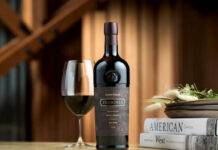Equipment can improve efficiency and enhance a venue’s reputation
WHEN ordering a drink at the bar, customers look for something they can’t replicate at home. And to achieve this, it’s up to operators to ensure their bar has the right equipment to deliver the best serves.
That was the view taken by various equipment suppliers, who told SLTN that recent advances in kit can help to improve efficiency behind the bar.

Cocktails continue to prove hugely popular in the on-trade, and this has created a need for a wider array of bar utensils, noted Rob Blunderfield of catering equipment firm Parsley in Time.
“It’s important that pubs and bars not only have a cocktail menu, but have the right kit to deliver it,” he said.
“Cocktail shakers, glasses or mugs, strainers, jiggers, spoons and utensils not only add to the theatre of the cocktail making, but can also enhance the flavours of the drinks they produce.”
And those aiming to deliver top quality cocktails must keep an eye on equipment trends, added Blunderfield, highlighting a recent surge in popularity for copper bar utensils.
Similarly, Guy Cooper of catering equipment firm Mitchell & Cooper, said there has been a clear trend towards retro cocktail equipment – with a variety of art deco-inspired designs now popular.
But while it remains important to stay current, operators should also keep an eye on the condition of their kit.
“With barware often in the public eye, and with the majority of equipment being used constantly each and every day, it is vital for operators to keep their equipment in good condition,” said Cooper.
Therefore, operators mustn’t be complacent about replacing kit.
With barware often in the public eye, it’s vital operators keep their kit in good condition.
Cooper said that “with much of mixology centred on the panache of cocktail making, having equipment break during use can quickly kill the atmosphere in any bar”.
And while some parts of the cocktail-making process can be theatrical, others, such as the use of noisy blenders, can be off-putting, noted Mark Hogan of Foodservice Equipment Marketing.
Hogan suggested quieter blenders and drinks mixers can be worthwhile investments for outlets where fruit or ice are regularly crushed.
Ice machines themselves are another back-bar staple.
Simon Aspin, commercial director of Hubbard Systems, which distributes the Scotsman icemaker range, said there are some innovations that could benefit licensees – especially those short on space.
“Advances in design have enabled modern icemakers to produce larger amounts of ice on the same or smaller footprints, with some models now built to cope with the fluctuating temperatures that can occur during a long serving period,” he said.
“Their adaptive cycle control fine tunes the machine for best performance and top quality ice cubes at all times.”
Aspin added that multifunctional ice machines are capable of producing different types of ice, such as larger cubes for ‘on the rocks’ drinks and nugget ice for blended drinks and cocktails.
Cocktails and long serves aren’t the only drinks that can benefit from the right equipment, of course.
Malcolm Harling, sales and marketing director for Williams Refrigeration, said that in order to maximise sales of bottled beers and ciders a venue’s fridges need to be able to display the drinks in their best light.
“It also has to be robust enough to survive a punishing level of wear and tear, as well as being reliable, easy to clean and easy to maintain,” he said. And glassware must also sparkle.
Paul Crowley of catering equipment supplier Winterhalter UK said: “In this age of social media, establishments can’t risk pictures of dirty glasses being posted online.”
[box style=”0″]
Top tips for back-bar kit
• Practicality – when it comes to replacing kit, ensure you consider capacity required during peak trading.
• Ease of installation – operators must ensure new equipment is easy to install and requires minimal alterations to the surrounding area.
• Reliability – ensure the brand selected offers good after-sales support, and holds a good stock of spare parts.
• Availability – bar equipment, such as icemakers, are often ‘distress’ purchases, most often replacing another machine. Ensure the supplier holds a good stock of your selected machine.
[/box]
Bob Wood, director of DC Warewashing & Icemaking Systems, echoed this view and said glasswashers therefore “have a critical role to play – not only in producing sparkling, hygienically-clean glasses and dishes but also in creating a neat, tidy, well-organised back-bar operation”.
For operators considering upgrading their glasswasher, Wood said new, smaller and more energy efficient models can deliver real value for money, but warned that a variety of aspects must be considered, including the number of clean glasses required per hour, water pressure available, and the possible requirement of a water softener.
When it comes to replacing any piece of back-bar kit, equipment firm Mitchell & Cooper’s Guy Cooper said buying a reputable brand “is always important”.
“Quality barware will not only give you peace of mind regarding its performance and longevity, but will help attract customers to the bar and can draw them in and impress them,” he said.
And Harry Millan of washroom equipment supplier Millan Services stressed that operators should not wait until equipment breaks down to replace it.
He said that contemporary lease purchase agreements can provide licensees with the best of both worlds when upgrading their equipment.
“I would recommend lease purchase as you are fully covered for three years with [the] equipment yours at the end of the period,” said Millan.
When deciding on new kit, Aspin, of Hubbard Systems, advised: “Whatever brand you choose, make sure that it offers after-sales support, including holding a good stock of spare parts and consumables (such as water filters), and can arrange ‘preventative planned maintenance’ service contracts on equipment.”



















